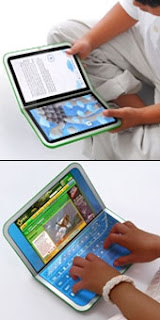Interactive Anthology of Children Poems in Hebrew. The project is designed with kids aged 6-10 in mind. This website takes the user on an illustrated voyage through 16 Hebrew poems. Ethereal, fairy-tale-esque animation combines with text to introduce the young user to an interactive world of Israeli verse. Click on an animated icon to journey through the poems, which are accompanied by background music and the option of oral narration. Simple, clear navigation facilitates the reading or listening experience and allows unsupervised enjoyment.
Producer: Ruth Gommershtadt
University: Bezalel Academy of Art and Design
Country: Israel
URL: http://ruttieg.carbonmade.com/about/
 Take This Dance and Forget My Name. ‘Video killed the Radio Star’ was a prophesy set to be fulfilled when it aired as MTV’s prototype in August 1981. A quarter of a century later, however, we find ourselves in the broadband era of ‘Internet killed the Video Star’, consumer expectations regarding the media of music video having changed. The key word now is ‘individualisation’. “Take This Dance and Forget My Name” exploits the internet’s propensity for ‘user-generated content’, and innovatively combines high-quality music video with the Web 2.0. With the integration of information from various external data sources, the user is passively involved in a personalised music video experience.
Take This Dance and Forget My Name. ‘Video killed the Radio Star’ was a prophesy set to be fulfilled when it aired as MTV’s prototype in August 1981. A quarter of a century later, however, we find ourselves in the broadband era of ‘Internet killed the Video Star’, consumer expectations regarding the media of music video having changed. The key word now is ‘individualisation’. “Take This Dance and Forget My Name” exploits the internet’s propensity for ‘user-generated content’, and innovatively combines high-quality music video with the Web 2.0. With the integration of information from various external data sources, the user is passively involved in a personalised music video experience.Producer: Thorsten Konrad and others
University: University of Applied Science Salzburg
Country: Germany
URL: http://www.takethisdance.com/
They shoot Music – Don’t They. This video/geoblog tags urban Vienna with unplugged indie soundscapes. Counter-acting the heavily manufactured nature of MTV-style music videos, the people behind this site tear indie artists away from the conventions of the stage. They then film them, in a single take, performing unrehearsed in various public spaces around the city. A simple mouse-click on the tagged map of the city centre offers unadulterated videos of artists performing at the selected location and gives detailed information and images of the location itself. The site presents an international audience of bloggers with a vibrant and arty image of Vienna, and an authentic, unique and intimate representation of the metropolis’ lesser known urban sub-culture.
Producer: Matthias Leish and others
Country: Austria
URL: http://www.theyshootmusic.at/
Blog Posting Number: 1271
Tags: broadband, online




















